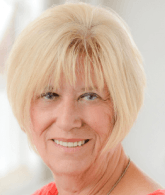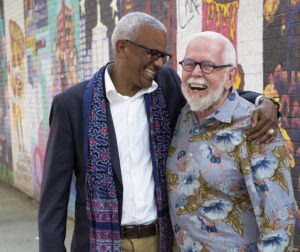One-on-one with… Peter Reed
In 1997, a group of long-term care visionaries representing many disciplines and stakeholders met to create a movement and philosophy to transform long-term care from an institutional model to one that honors the human spirit and gives everyone a voice and choice in the decisions that make life meaningful. This was the birth of the culture change movement.
Over the years, the culture change movement has grown, been refined and embraced by people and organizations dedicated to seniors and other people who make their homes in long-term care communities.
The seeds of culture change planted at this meeting have grown and flourished into new ideas, experiences and organizations that have made great—and continuing—strides in redefining aging.
Long-Term Living Managing Editor Sandra Hoban recently spoke with Pioneer Network CEO Peter Reed on the state of culture change. Dr. Reed has 20 years of experience in the field of aging. In addition to his previous collaborations with Pioneer Network, he has been involved with the Alzheimer’s Association, served on the faculty at the UC-Davis School of Nursing and led a health policy research program. While much has been accomplished, there are still challenges to be met in the transition to culture change.
Culture change has been around for many years. How did Pioneer Network become a leader redefining aging in America?
Pioneer Network, formerly Nursing Home Pioneers, was started by a group of thought leaders including convener Carter Williams and Rose Marie Fagan, who served as the first Executive Director. Various culture approaches such as Live Oak Regenerative Communities, Planetree, Eden Alternative, Green House®and others, have helped demonstrate what person-centered carepractices could achieve.
Originally, their focus was on the elimination of physical restraints. Twenty years ago, it wasn’t uncommon to see people sitting in nursing home halls, tied to wheelchairs. When these founders of culture change saw how physical restraints limited the choice and independence of nursing home residents, they realized that other areas of nursing home life such as meals, social interactions and simple choices, such as when to rise and when to eat, were being compromised, preventing residents from having meaningful, self-directed and positive daily experiences. At the time, these institutional practices and policies were not only the standard, but they were accepted by the community at large as elder care.
Within a few years of launc hing the movement, Nursing Home Pioneers changed its name to Pioneer Network and outlined a mission to transform the culture of aging into a life-affirming, satisfying, humane and meaningful experience. Today, the organization addresses the larger issue of ageism in society. However, ageism is more pronounced in the nursing home setting because that is where the most vulnerable elders are—where they are most likely to be stripped of choice and independence for the sake of institutional processes.
How do nursing homes begin to change their philosophy and initiate or expand person-centered care?
One of the primary outcomes of “culture change” is “person-centered” care. Those terms are pretty well-known. However, the depth of meaning that they have in terms of organizational transformation is probably not occurring at the level we’d like to see. There are barriers, particularly in awareness. It’s challenging to get people to recognize the importance of the values on which culture change is based and the importance of focusing on choice.
To effectively introduce culture change into a nursing home requires a complete philosophical change in the home’s structure. Every aspect needs to be directed at promoting resident choice not just about care, but everyday living.
Throughout the movement, there have been various studies and milestones achieved. We can now say that anywhere from 5–10 percent of homes in the United States are doing deep transformation. Many more homes have heard about it and are incorporating some culture-change practices into the fabric of their organizations. What Pioneer Network tries to do is raise awareness and highlight organizational changes and strategies to promote choice.
Since so much of culture change involves nursing and ancillary staff, are you seeing staff adopting the principles of culture change and person-centered care?
It depends on the home and the types of programs they have in place. For a home that is undergoing deep culture change and transforming its organization, culture change education is a central part of the training that everyone receives—not just the care-related staff—if it is going to succeed. Staff has to have an appreciation of putting the resident first and creating a sense of home. And language is a big part of that. For example, we don’t use the word “facility” because that term is applicable to an institution-based model and is in conflict with the “home” we are trying to create.
Culture change organizations are homes first, where the elder lives. They are not institutions although they do offer the clinical care and support needed to live a full life. If staff knows the terminology but doesn’t understand the culture change philosophy, then education is necessary. There are many resources at the national, state and local levels, including 65 Culture Change Coalitions in 40 states, to help nursing homes embrace the values of culture change. If you change your organizational philosophy to reflect that, then it must filter into training all staff to be successful.
How does Pioneer Network help to achieve institutional transformation?
I like to think that Pioneer Network is the starting point—the catalyst—for culture change. We’re thought leaders, promoters of change and conveners of all the approaches, models and experts on the subject.
Pioneer Network also serves as a clearinghouse of tools and resources for organizations and individuals to access. We do not have a particular approach to culture change like some of the models I mentioned earlier, but we embrace and encourage people to use any or all of the models that are aligned with their values. Finding the right approach and fit for your organization is the first step in the journey.
There are various models, approaches and consultants that can be discovered through Pioneer Network and its website (www.pioneernetwork.net) to access the resources that suit your unique situation.
For me, the movement has a lot of recognition. but can always gain momentum. Many people have heard about culture change, but we have not achieved the reach or impact in terms of organizations knowing how to transform their homes in ways that truly enable elders to make life-affirming choices every day. Pioneer Network is ready to help.

Sandra Hoban was on I Advance Senior Care / Long-Term Living’s editorial staff for 17 years. She is one of the country’s longest-serving senior care journalists. Before joining Long-Term Living, she was a member of the promotions department at Advanstar Communications. In addition to her editorial experience, Sandi has served past roles in print and broadcast advertising as a traffic and talent coordinator.
Related Articles
Topics: Advocacy , Articles











